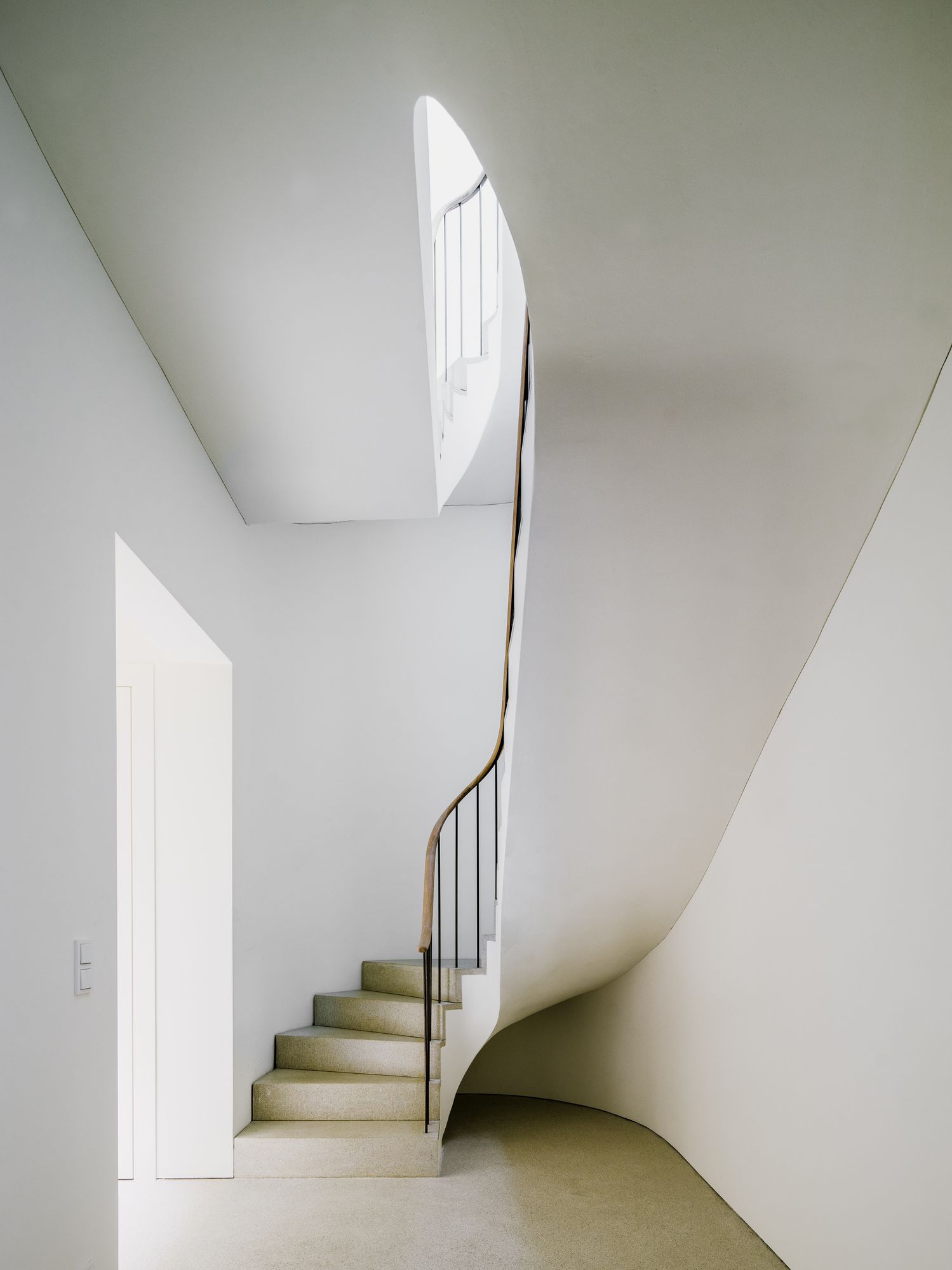Villa in Bogenhausen is a minimal home located in Munich, Germany, designed by David Chipperfield Architects. The house is composed of three staggered cuboids that respond to the building’s surroundings. The two outer volumes align with the eaves of the neighboring houses, while a central volume rises above them in a visual nod to the church tower across the street. Constructed in brick and finished in a sand-colored render, the house presents a largely blank façade to the outside world, turning instead toward the rear garden. A continuous wall in the same color as the house wraps around the perimeter of the plot. This otherwise blank wall is given articulation by the large oak garage and entrance doors. At the corner facing the intersection, the house steps back from the wall to form an entrance courtyard. To the rear, the building frames a sheltered garden. Large windows overlooking the garden fill the living spaces with daylight.
The staggered arrangement of the structure is also visible inside. On the ground floor, the entrance hall assumes a central position, from which all rooms are accessible. An oval-shaped staircase leads to the private rooms on the first floor and the rooftop terrace above. In order to create a clear and calm home, a limited palette of materials was selected: oak floorboards in the living areas and terrazzo for the stairs as well as the floors and surfaces in the kitchen and bathrooms. Grey bricks, laid in a herringbone pattern, are used in the garden, courtyard and rooftop. The choice of materials as well as the building’s reduced design language emphasize the open and generous character of the house.
Photography by Simon Menges
